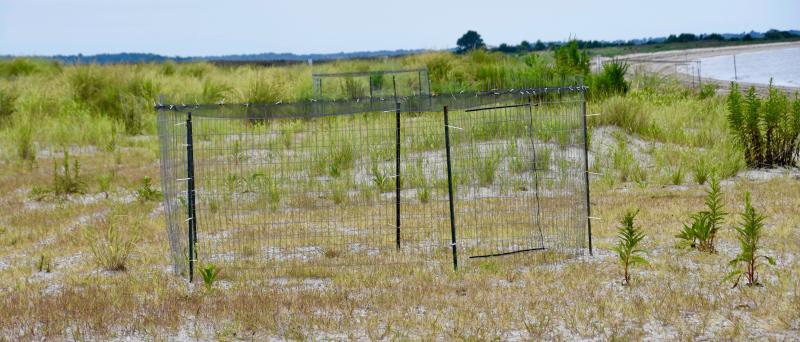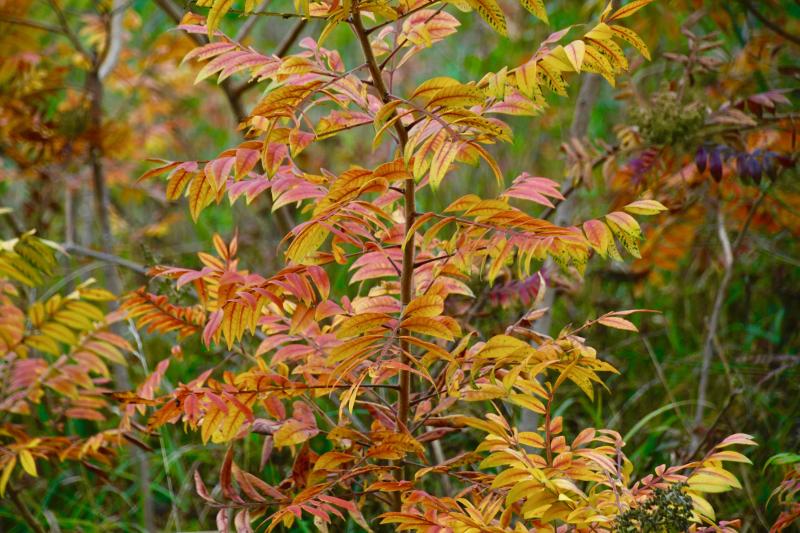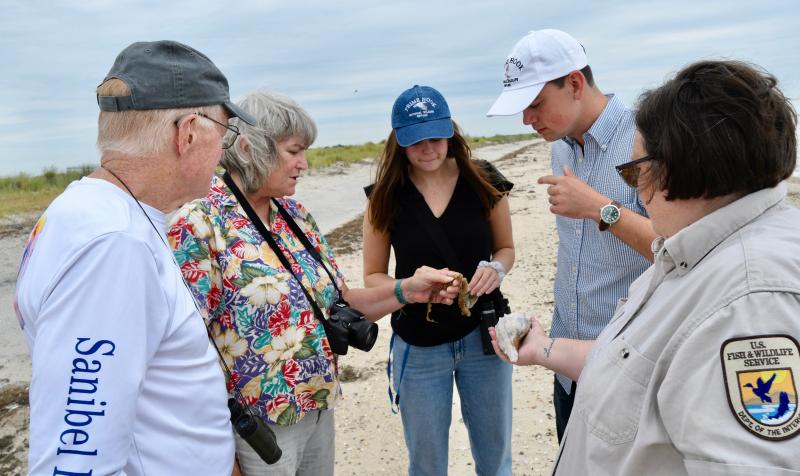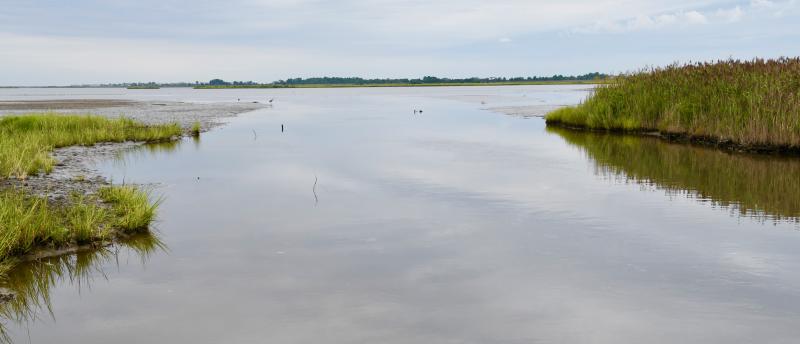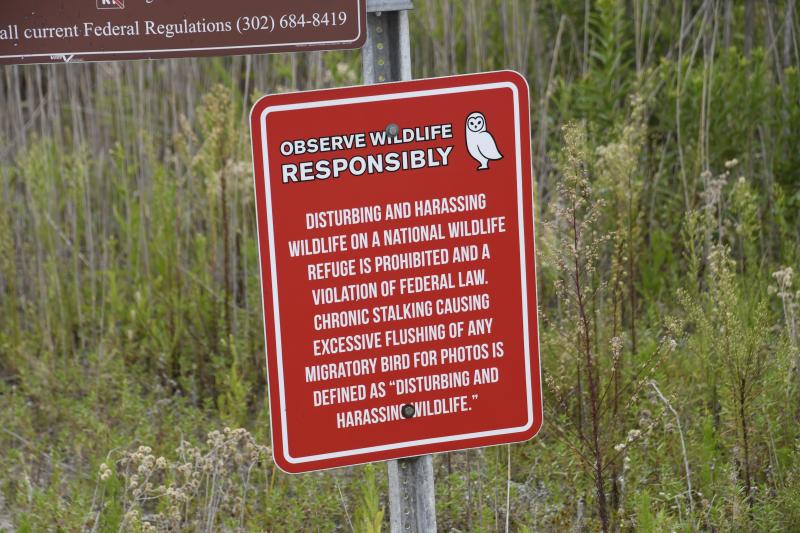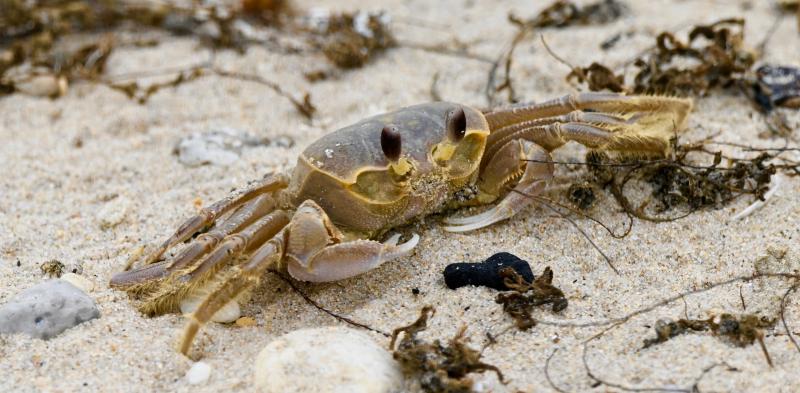Sen. Coons aides tour Prime Hook refuge
Two Washington, D.C. members of U.S. Sen. Chris Coons' staff got an up-close and personal tour Aug. 24 of Prime Hook National Wildlife Refuge, which includes more than 10,000 acres of mixed habitat.
The tour was led by Prime Hook-Bombay Hook project manager Kate Toniolo and Friends of Prime Hook President Cindy Heffley. It included staffers Chris Avila and Jenna Mayhew, and Rob Morgan of Lewes, director, secretary and general counsel for the National Wildlife Refuge Association.
The manager highlighted some of the challenges facing the refuge, including trespassing on marshland and Fowler Beach during piping plover nesting time March through September, and the lack of law enforcement and staffing. The refuge shares most of its staff with its sister site, Bombay Hook National Wildlife Refuge along Delaware Bay in Kent County. There is one law enforcement officer for all refuges on the Delmarva Peninsula.
Toniolo said the Friends group provides invaluable volunteer hours to the refuge. They also operate a refuge store; coordinate birding field trips; maintain trails, bird boxes and bird feeders; represent the refuge at public events and festivals; conduct an annual photo contest; and maintain the gardens within the refuge.
The refuge is also in the process of construction for a new 2,500-square-foot visitors' center at the entrance off Broadkill Road.
The plover success story
Toniolo said one of the success stories at the refuge is the comeback of the endangered piping plover.
“They are building a stronghold here,” she said.
That's in spite of predators that pursue them, including foxes. Once nests are established, refuge staff place caged impoundments around them to keep out foxes.
This year, there were a record 22 nests, with about 22 fledglings surviving.
“Our protection for plovers benefits the entire ecosystem,” she said.
The refuge also protects nesting areas of the endangered least tern. The manager said they experimented with electric fences, but foxes have learned to jump over them.
A dying marsh is reborn
From the summer of 2015 through the fall of 2016, the refuge underwent one of the most ambitious marsh and beach restoration projects ever on the East Coast.
Due to a series of storms, starting with waves and high tides from Hurricane Ernesto in 2006 and ending with Superstorm Sandy in 2012, several breaches were opened along the beachfront, allowing saltwater from Delaware Bay to wash into freshwater marshes eventually destroying Fowler Beach, and more than 4,000 acres of marsh reverted to open water.
The restoration included reopening channels within the refuge to allow for better water flow, a buildup of sand in two of the impoundments and planting of marsh grasses. Two miles of Fowler Beach was restored using 1.5 million cubic feet of sand from the bay along with more than 10,000 feet of sand fence and the planting of 58 acres of spartina, beach grass and other vegetation.
The restoration, and a subsequent new bridge on Broadkill Road, helped to provide flood protection for Primehook Beach, which shares its border with the refuge.
A decision was made to return the refuge to primarily a saltwater marsh habitat. Slowly, the refuge recovered, and in 2017, Fowler was named one of the top five restored beaches in the country.
The refuge included freshwater marshes to attract waterfowl, and it became a prime duck-hunting destination along the East Coast. Now the refuge is primarily a saltwater marsh habitat.
“Duck hunting is not good, but there is not a shortage of deer,” Toniolo said. “There is different hunting here now.”
In addition, all farming within the refuge property was halted.
Toniolo said maintaining freshwater marshes will not succeed in the long run.
“Mother Nature reclaimed the area,” she said.
“There are three endangered species at the refuge. We have a big focus on biological programs here,” Toniolo said.
The refuge contains diverse habitats of marsh, beach, wetlands and forests attracting tens of thousands of waterfowl and shorebirds, the endangered Delmarva fox squirrel, bald eagles, ospreys and countless mammals, reptiles and amphibians, fish, insects and other birds. The refuge is a favorite destination for birdwatchers and nature photographers. It also offers seven-and-a-half miles of trails for hiking, and canoe and kayak trails, fishing and crabbing.
The refuge was founded in 1963 and is celebrating its 60th anniversary this year.


